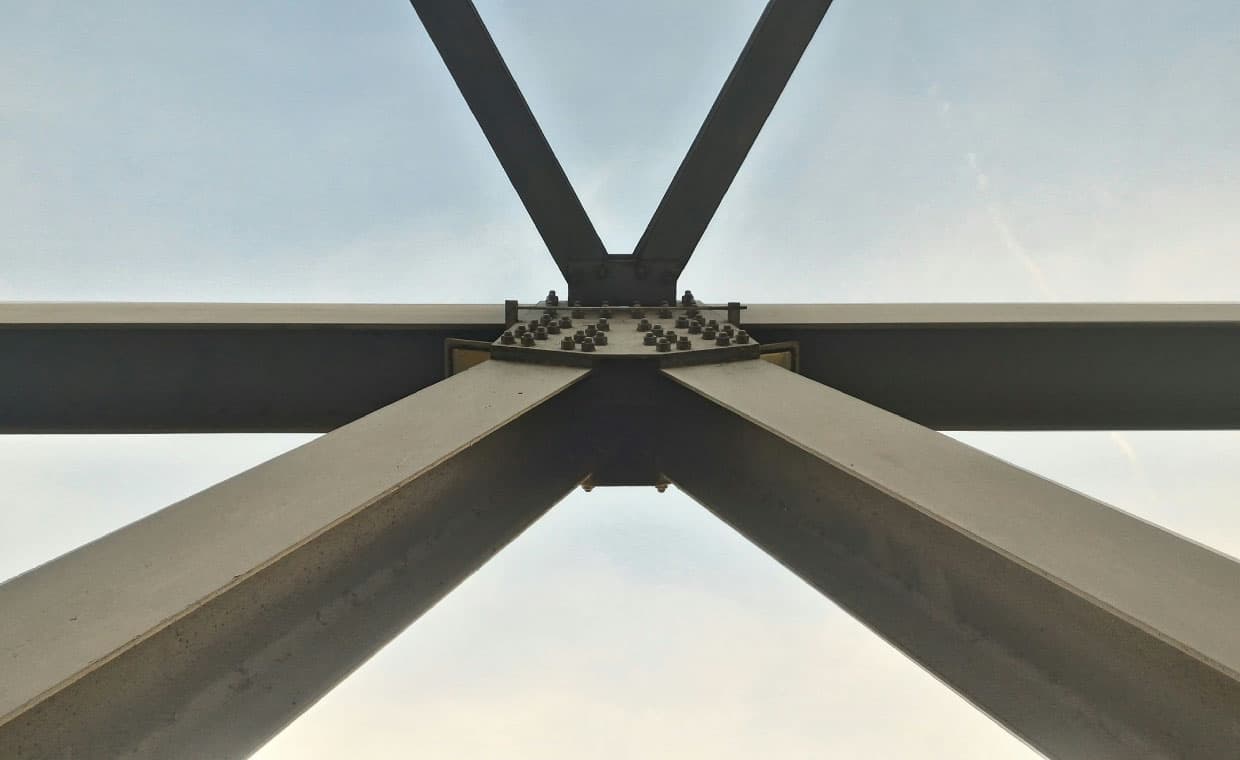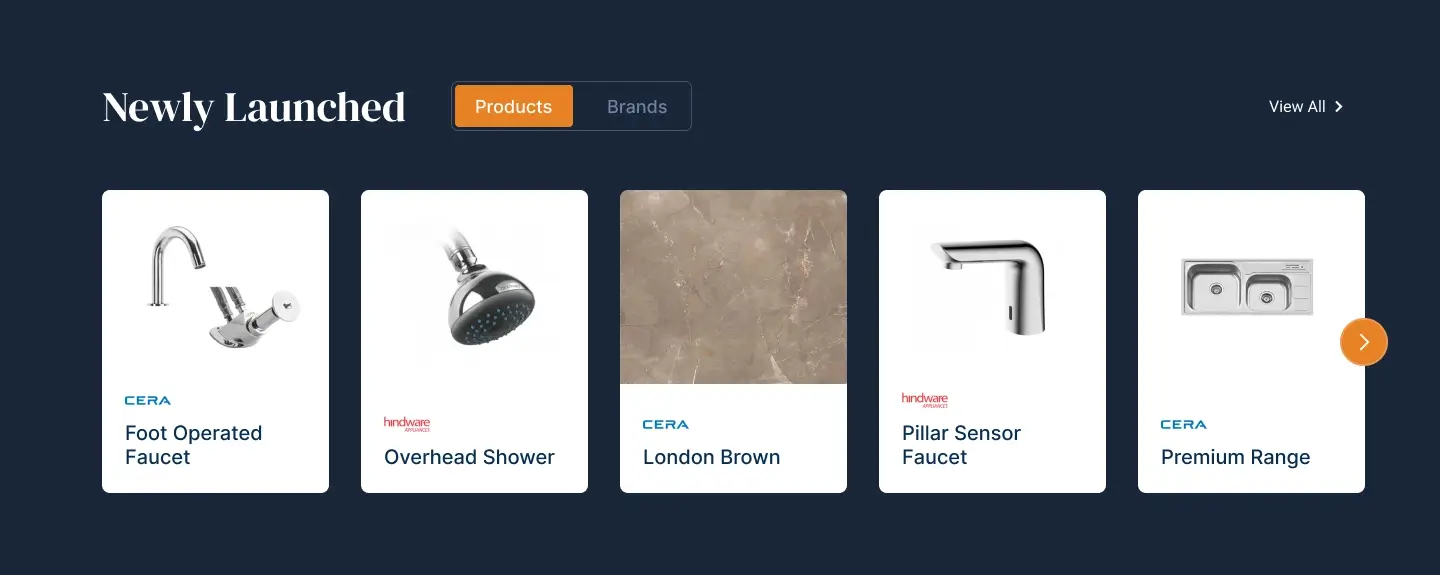
Table of Contents
Quick Summary
Steel construction is rising with great pace. Steel structures are being widely adopted for all types of projects, from residential to commercial. However, there are advantages and disadvantages to be taken into consideration.
- Steel construction offers design flexibility and is the best option for large-span structures.
- Steel structures are strong, durable, and lightweight.
- They save construction time, as they are erected and fitted on-site.
- Steel components are manufactured in plants, ensuring high accuracy.
- Steel structures are sustainable and versatile.
- They involve high initial costs.
- Steel structures have low thermal efficiency.
- Steel is susceptible to buckling, and so do steel structures.
The construction industry has accelerated in recent years, thanks to quick and efficient construction techniques and materials. Among the various construction methods, steel construction is flourishing each day. To help you choose between steel vs concrete construction, we have listed the advantages and disadvantages of steel structures.
The use of steel is steadily increasing in construction projects across the globe. Steel framing is an effective construction method as compared to others. According to (Abu-Saba, 2012)(Author of Design of Steel Structures), “Steel has many characteristics that make it more advantageous than concrete. Structural steel takes less time to erect. The combination of high strength, light weight, ease of fabrication and erection, and many other favourable properties makes steel the material of choice for construction”. From skyscrapers and bridges to beautiful contemporary homes, steel is now used in almost every type of structure.
Advantages of Steel Structures
1. Steel Structures Offer Design Flexibility
One of the most evident advantages of using a steel structure in construction is its flexibility. This offers greater freedom in the design of a project. Steel’s greatest design asset may be its ability to span long distances without interrupting the related interior columns. It also allows for easier renovations and future modifications.
2. Steel Structures are Light in Weight
Structural steel components are both stronger and lighter than those made from load-bearing concrete or wood. In fact, steel fabrication can be 30%-50% lighter than its wooden equivalent. According to (Tolga Celik, 2018), “the total mass of the structural frame for the villa designed using reinforced concrete construction was found to be 18 times heavier compared to the villa designed using lightweight steel construction.” Additionally, lightweight steel structures are less prone to earthquake damage.
3. Strength and Durability of Steel Structures
Steel structures offer excellent strength and durability. A steel structure construction can withstand extreme forces or harsh weather conditions, such as earthquakes, strong winds, hurricanes and heavy snow to a larger extent. They are also rust-proof and, unlike wooden structures, they are unaffected by termites, mildew, bugs, mould, and fungal infestations. Furthermore, steel is significantly more fire-resistant than wood. With proper maintenance, steel structures can last over 50 years.
4. Speedy Steel Construction

The off-site prefabrication of steel-framed structures enhances the speed, quality, and safety of construction. The construction time of a steel structure is approximately one-third that of a concrete structure, making it possible to complete large-scale projects in a shorter period. According to (Ching, 2014) (Author of Building Construction Illustrated), conventional steel structures are built using hot-rolled beams and columns, open-web joists, and metal decking. Since structural steel is difficult to fabricate on-site, it is typically cut, shaped, and drilled in a fabrication shop as per the design specifications, resulting in faster and more precise construction.
5. Versatility and Adaptability
Steel is incredibly versatile, as it can be moulded into almost any shape, making it an ideal material for various types of steel structures in both residential and commercial construction. Steel studs are available in a range of sizes and can be manufactured as needed. This allows architects the freedom to explore creative designs while still ensuring the structural integrity and safety of the building. Additionally, it is easy to alter or reposition steel parts. They offer greater adaptability for last-minute changes or future modifications.
6. Resistance to Fire, Pest and Moisture
Fire: Steel structure construction is a marvel. These structures are more fire-resistant than wooden structures but less so than RCC structures.
Pest and Insects: Steel is termite-proof and not susceptible to damage by insects or rodents. It does not require any insect-resistant treatments.
Moisture and Weather: Steel structures offer excellent resistance to moisture. However, this may vary depending on the carbon content of the steel. Applying hot zinc coating and extra powder treatments can enhance rust resistance, making structural steel components even more resistant to the effects of water exposure, temperature fluctuations, and outdoor environmental conditions.
7. Steel Structures are Cost-Effective
Steel is lighter than timber or concrete, which makes it easier and cheaper to transport, reducing fuel costs and accelerating project timelines. In addition, steel is also energy-efficient and recyclable, producing minimal raw material waste. Since steel components are prefabricated in manufacturing plants, there is virtually no on-site waste. While the initial cost of steel structures may be higher, they are more cost-effective in the long run due to reduced labour, maintenance and construction time.
8. Steel Structures are Sustainable
Steel is one of the most recyclable materials in the world. Using recycled steel significantly conserves natural resources and energy, lowering the cost of producing new steel products. In contrast, concrete is barely recyclable, and wood can be partially reused. The high recyclability of steel makes it an environmentally responsible choice for modern construction.
Also Read: 6 Ways That Steel Building Structures Are Eco-Friendly
9. Improved Construction Quality
Steel elements used in steel structure construction are produced, cut or bent in a factory or fabrication plant using computer-controlled methods. This ensures high-quality steelwork. Moreover, unlike wooden or concrete structures, steel buildings do not deteriorate over time. As a homeowner, you don’t have to worry about weak spots developing.
10. Ductility
Ductility refers to a material’s ability to undergo significant deformation without breaking, a key advantage of steel structures under heavy force. Unlike concrete, which can crack or fail suddenly, steel tends to bend or stretch. This ductile property enables steel buildings to derom without collapsing, offering critical warning time to occupants in the event of structural failure. Steel structure rarely collapase without prior signs of distress, making them particularly resilient during earthquakes. In short, in the event of sudden structural threat, a steel building provides time for safe evacuation.
Disadvantages of Steel Structures
1. High Initial and Maintenance Cost
Steel structures demand precision engineering and skilled labour, which drive up initial costs. Despite maintaining quality throughout the construction process, some errors may still occur. These errors can lead to high maintenance costs. For instance, even when a structure is made of high-quality, corrosion-resistant steel, there are still chances of corrosion if steel is exposed to harsh weather conditions for an extended period. To prevent further corrosion, corrosion-resistant paint must be applied, which adds to the maintenance cost of steel.
2. Susceptible to Buckling
Buckling occurs when slender structural members, such as steel columns or struts, bend or deform laterally under compressive loads. Due to steel’s high strength-to-weight ratio, components are typically slender, making them more vulnerable to buckling under stress if not supported or braced properly.
3. Lower Thermal Efficiency
Steel has a high thermal conductivity, meaning it heats up and cools down quickly with changing temperature. This rapid temperature fluctuation in steel structures reduces the efficiency of air conditioners and heaters, leading to higher energy consumption. Enhancing steel’s thermal insulation properties requires specialised treatment, which can be expensive.
4. Fire Damage
While steel is more fire-resistant than wood, it is less fire-resistant than concrete. Prolonged exposure to high temperature can compromise the structural integrity of steel. At elevated temperatures, steel undergoes permanent deformation under load, leading to large deflections. When the main steel members lose strength; the load is transferred to other members, increasing the risk of collapse.
5. Fabrication Error
Though steel is a versatile material, it leaves little room for error on-site. If pre-fabricated steel components do not fit properly, on-site modifications are difficult and sometimes impossible. Most manufacturers follow strict quality assurance protocols, but minor mismatches can still occur. Unlike wood, steel cannot be easily cut or reshaped at the construction site once fabricated.
Conclusion
The use of steel in construction has wide-ranging applications, making it essential to understand the advantages and disadvantages of steel structures beforehand. Steel structures offer clear benefits over wooden or RCC structures, from unmatched strength and durability to long-term sustainability and design flexibility.
Overall, steel is a versatile building material that plays a role in nearly every stage of modern construction, from framing and floor joists to roofing systems. While it was once reserved primarily for large-scale commercial or industrial buildings, advancements in lightweight steel technology have made it a viable option for residential and small-scale projects as well.
Also read: Benefits of Using Steel in Construction: Here’s Why Steel Wins Over Wood
Where are the Steel Structure Buildings Recommended?
FAQs: Advantages and Disadvantages of Steel Structures
1. What is one primary advantage of steel structure?
One primary advantage of a steel structure is its exceptional strength-to-weight ratio. Even the sleek and lightweight steel components exhibit high strength. This gives architects the liberty to design steel structures with longer spans and better aesthetics.
2. What is the most common type of structural steel?
Carbon steel is the most common type of structural steel. The carbon in steel makes it resistant to corrosion and improves its ductility, which allows for the moulding of structural steel into any shape and size.
3. Are steel buildings safe in earthquake zones?
Yes, steel buildings are safe in earthquake zones. Steel structures are ductile (good tensile strength), which means they tend to bend first rather than break, unlike concrete, making them safer during seismic activity.
4. Can you build a house with steel construction?
Yes, lightweight steel is best for constructing houses. It reduces construction time and ensures high-quality workmanship.
5. Is a metal building better than a concrete building?
Whether to opt for a metal building or a concrete building depends on various factors such as cost, performance, maintenance, construction time, labour availability, resources, etc. If you have the financial means to cover the initial costs of a steel building and prefer a faster construction process, then steel structures are a great choice.
References
Abu-Saba, E. G. (2012). Design of Steel Structures. Springer US.
Ching, F. D. (2014). Building Construction Illustrated. John Wiley & Sons; 5th edition .
Tolga Celik, S. K. (2018). Multidimensional Comparison of Lightweight Steel and Reinforced Concrete Structures: A Case Study. ResearchGate, 1234-1242.






























